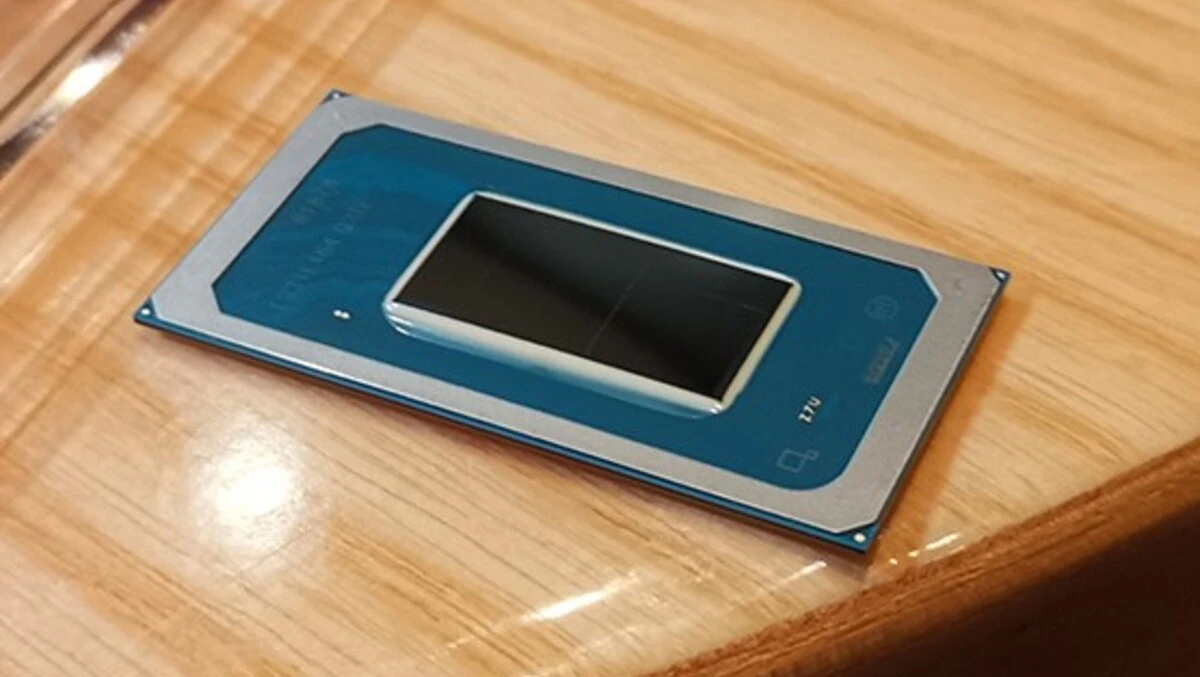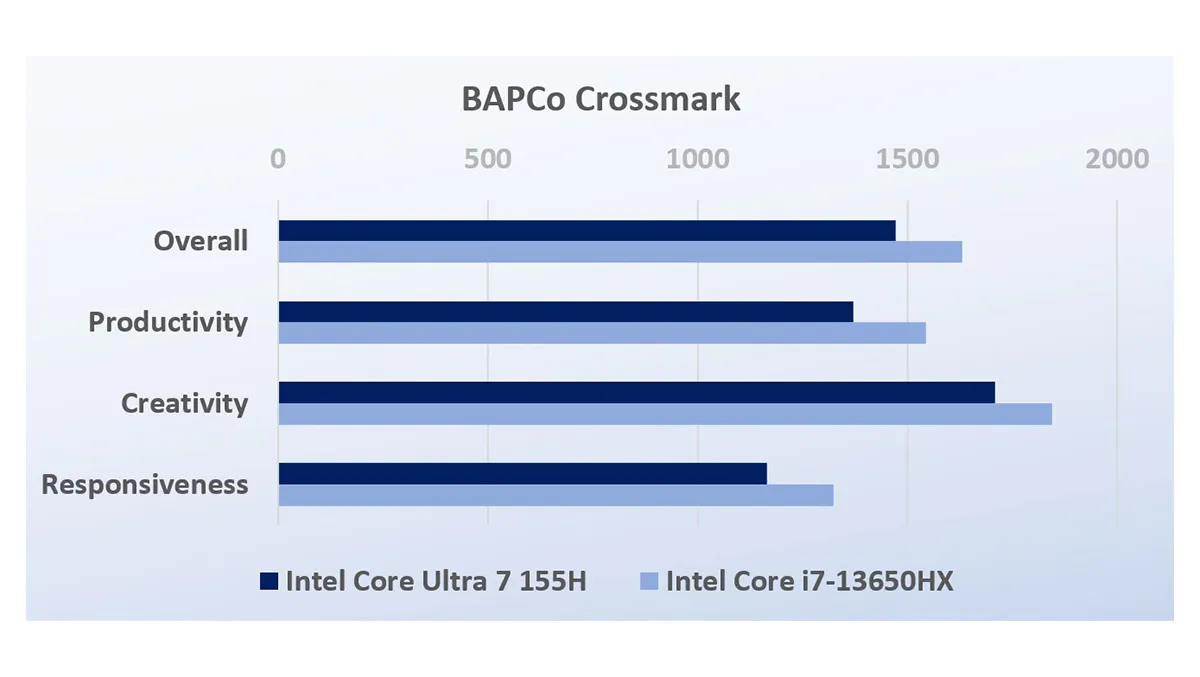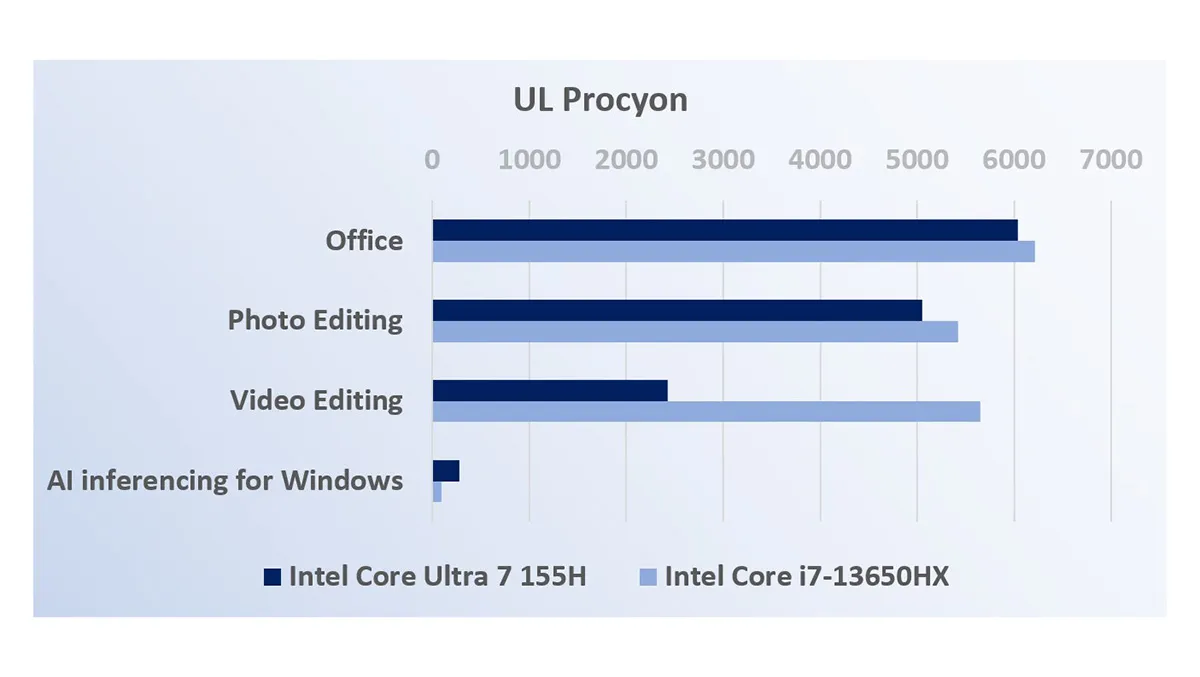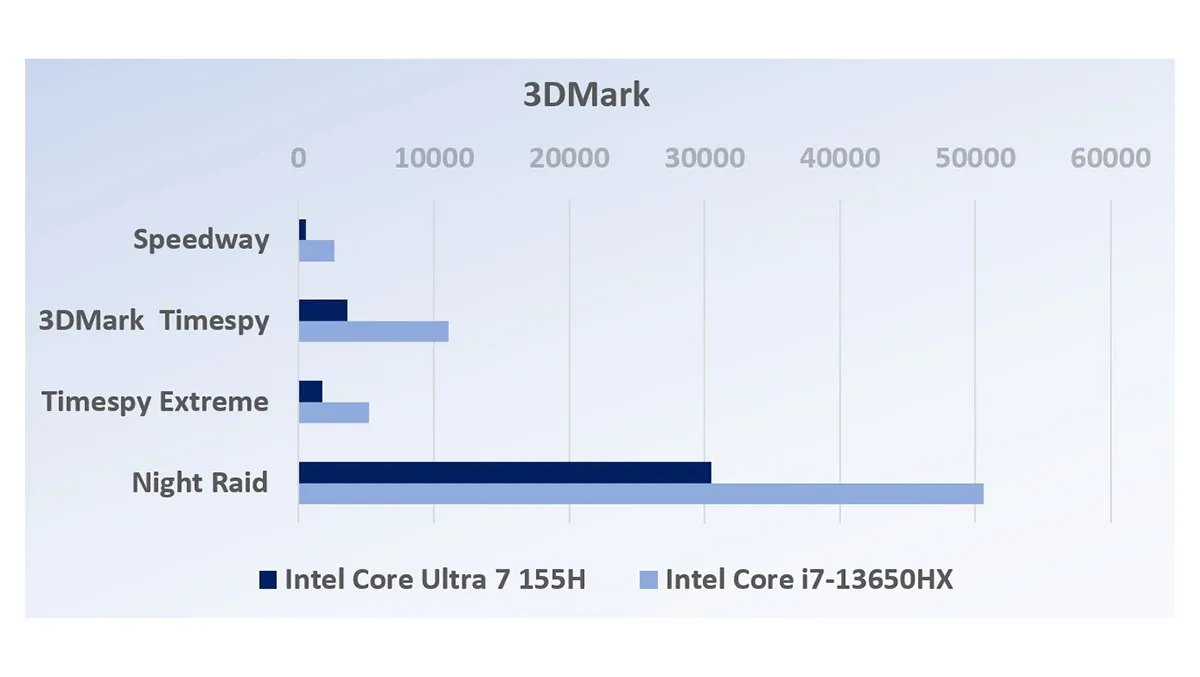
Hands-on review: Intel Core Ultra 7 155H AI-enabled notebook processor
At CES 2024, Intel allowed Techday to test the AI capabilities of its new Core Ultra notebook processors. One of the first notebooks out the gate with this new technology is the Asus Zenbook 14 OLED with its Intel Core Ultra 7 155H processor.
It's easy to get enamoured by cool devices and the Asus Zenbook 14 OLED is a very cool device. But instead of fawning over the Asus notebook's luxurious stylings, that'll be the focus of a separate review. For now, let's take a look at the Intel Core Ultra 7 processor and find out what it is, what it isn't, and why it matters.
For quite a few years now, PCs have been moving away from traditional desktops and towers. The traditional PC has become reserved for gaming or high-end graphical design. Even then, the days of large desktop PCs, where energy use is inconsequential, are numbered.
Even compact but powerful laptops designed to maximise battery life are giving way to thinner, lightweight notebooks. The convenience of a notebook would often mean a performance compromise.
This is where Intel Core Ultra possessors come in. Intel's new chips that will be powering the next generation of notebooks are a change from the usual fayre. Core Ultra processors don't have the Core i5, i7 or i9 naming convention but still have their 5, 7 and 9 suffixes to differentiate between the entry, mid and high SKUs.
The standout features of these new notebook processors are the onboard Intel ARC GPU and the Intel AI Boost NPU, or neural processing unit. What this means is that rather than sporting the mundane Intel HD graphics integrated into Intel desktop CPUs or the slightly more useful Intel Iris Xe found in laptops aimed at creators, these new processors have integrated versions of Intel's high-performance discrete ARC GPUs on the chip. Also, for the first time, Intel has included a dedicated NPU for AI operations.
The eleven different Intel Core Ultra chips released at the end of last year are classed as "Series 1" rather than part of Intel's mobile 14th-generation processor line-up. There are three types of Ultra 5 and Ultra 7 chips and one Ultra 9. This allows OEMs to choose from a variety of components with different frequencies, core counts, and power draws for their devices. This, admittedly, doesn't help consumers, however, who will need to be extra careful to check chip model numbers when comparing devices.
Marketing aside, the inclusion of an NPU in the Intel Core Ultra processors is probably a little bit early, as applications have to be programmed to make use of these AI components. For now, for most people, the NPU will be working out of sight, tidying up your camera background blur and dynamically fixing your eyes to look at the camera. Other applications like Audacity can use the NPU to make AI "music". There's an Intel AI OpenVINO plugin for Gimp that'll allow Stable Diffusion generative AI image functionality to be carried out locally. And this is where AI computing is heading.
Organisations are already becoming aware of the pitfalls of using online generative AI services. There's no guarantee that the data is protected and not also being used to train the AI. Potentially sensitive information has to be sent online to use AI services. But what if you don't want to send your data online, or what if you don't have an Internet connection?
Having a dedicated NPU means that AI models can be run without impeding the CPU or the GPU. AI image, video and audio editing and effects can be applied without the need for an Internet connection or service.
With application vendors like Adobe heavily invested in the indirection of AI into their software, and Microsoft investigating the implementation of AI functions into the Windows operating system, NPUs are going to soon become an essential part of PCs, laptops and notebooks.
Asus's new Zenbook 14 OLED is powered by an Intel Core Ultra 7 155H processor. So, it not only features a fast CPU but also an integrated Intel ARC GPU and an
Intel AI Boost NPU. The notebook's built-in AI capabilities mean that generative AI functions that would ordinarily be carried out via cloud processing can now be performed locally on dedicated hardware within the device.
But how does the Intel Core Ultra 7 155H processor perform, and is it the processor that you want in your next notebook PC?
The Core Ultra 7 155H represents the mid-range of Intel's Series 1 Core Ultra notebook processors. It is mainly aimed at general PC office use and maybe applications like Photoshop.
The CPU has 16 cores. That's six performance cores, eight efficient cores and two low-power efficient cores. The p-cores do the heavy lifting whilst the e-cores maintain background tasks. The max p-core frequency is 4.8GHz with a base of 1.4GHz. E-cores max at 3.8GHz, and the low-power e-cores max at 2.5GHz. This configuration allows the CPU to scale performance optimising energy consumption, a base draw of 28W and a maximum draw of 115W, thus prolonging battery life.
The on-board Intel ARC GPU has 8 X-cores running at 2.25GHz and can utilise Intel's XeSS AI super sampling to upscale game graphics for better performance. This would put the GPU roughly on par with Intel's ARC A380 desktop GPU. As a low-power integrated, on-chip GPU, it doesn't guzzle battery like a discrete GPU such as those from Radeon or Nvidia you may find in a laptop.
The 1.4GHz Intel AI Boost NPU rounds off the features of the 155H. This neural processing unit can, with appropriately designed applications, take the AI loads traditionally placed on the CPU or GPU.
The Intel Core Ultra 7 155H supports up to 96GB of DDR5 memory, PCIe Gen5, and Thunderbolt 4. It's an uncompromising processor that allows for fully-featured PCs in the notebook form factor.
Using the Zenbook 14 OLED, I put the Core Ultra 7 to the test across a range of benchmarks designed to replicate real-world applications and scenarios. I ran the same tests on both the Intel Core 7 155H equipped Asus Zenbook 14 OLED and an Asus ROG Strix G16 laptop, with a 13th-generation Corei7-13650HX CPU and an Nvidia RTX 4060.
BapCo's Crossmark is an industry-standard series of tests for creative and office uses. PCMark10 offers PC benchmarks for productivity, office applications, and digital content creation. UL Procyon is a professional benchmarking suite that tests PCs using Microsoft Office and Adobe Creative Suite applications.

I also ran a test using Procyon's AI Inferencing benchmark. Maxxon's Cinebench tests single and multi-core CPU rendering capabilities. I ran tests with both Cinebench R23 and Cinebench 2024. And finally, 3DMark was used to assess the processor's gaming capabilities.
Across all the application-based benchmark results the Intel Core Ultra 7 155H Zenbook held up well against the Core i7-1360HX ROG Stix laptop. The notebook's Core Ultra 7 scored slightly less than the laptop's i7, but not by much. Benchmarks that took advantage of the laptop's powerful Nvidia RTX GPU were, understandably, the only results significantly different. The Core Ultra 7's score of 281 in the AI inference test, which uses Intel's OpenVINO, considerably outperformed the Core i7-13650HX's score of 94.

The 3DMark results are a bit like comparing apples with oranges. The Core Ultra 7's integrated ARC GPU was never going to be able to compete with the laptop's Nvidia RTX4060 GPU. The results are useful to highlight the realistic limitations of the Intel Core 7 155H as a gaming platform compared to that of a dedicated gaming laptop.
The gaming prowess of the Asus's Zenbook 14 OLED should, however, not be dismissed. It's worth noting that the Intel Core Ultra 7, with its onboard ARC GPU, beat the 3DMark scores of the Asus ROG Ally handheld gaming PC. The Zenbook managed a 3DMark Timespy score of 3603 and Speedway score of 502 compared to the Ally's 3203 and 502.
The 3DMark XeSS test illustrated the importance of utilising Intel's Xe Super Sampling technology when playing games with this option. XeSS can give players a 56% performance boost just by enabling this option in-game graphics settings.
Benchmarks only tell part of the story. As well as general office applications, I've been using the Intel Core Ultra 7 Zenbook for image editing with Adobe Photoshop and Trimble's Sketchup 3D design software. The machine has been responsive and more than capable of running these two creative applications.
I tested the NPU by removing vocals and splitting instruments into individual channels using Audacity with the OpenVINO plug-in. This is an operation that would have been impossible only a few years ago, but something that the Zenbook did for me in a matter of minutes.
As for gaming, I played Tekken 8, Death Stranding, Diablo 4 and Balder's Gate 3, all with no trouble. The settings were a little lower than I'm used to, coming from a high-end gaming rig, but the ARC GPU did the job.
It should be noted that MSI's new Claw A1M handheld PC gaming console uses the Intel Core Ultra 7 155H processor as the Zenbook 14 OLED, so you absolutely can play games on a device with this chip. Some limitations need to be accepted. You'll not be playing new AAA games on ultra settings upscaled to 4K; instead, you'll most likely be low to mid at 1920x1080 with Intel's XeSS AI upscaling.
I was initially going to cover both the Intel Core Ultra 7 and the Zenbook 14 OLED notebook together. This is because the notebook form factor and the processor's relative performance are important.
From a price perspective, the Zenbook and ROG Strix are close, as are their respective mid-range specifications. The difference is that the chunky ROG Strix G16 weighs 2 kg whilst the 14mm thick Zenbook is 1.25 kg. The ROG Strix also devours battery to the point that it needs to be plugged into a power supply after 2 hours of use, whereas the Zenbook will go for the whole day on a single charge.
The Intel Core Ultra 7 is the shape of things to come, even if most applications that'll take full advantage of the NPU are still incoming. The superior CPU performance and the integrated Intel ARC GPU allow for efficient, optimised and future-proofed notebooks, offering users an almost perfect balance of performance, form factor and battery longevity.


